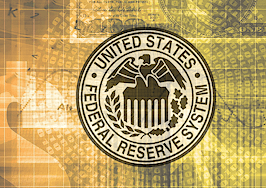The Fed has several jobs. The long-term one overrides all: stable purchasing power in the dollar — which means neither excessive inflation nor deflation, a target of 2 percent annual inflation (much lower is as damaging as much higher). The Fed’s second job: try to maintain a stable economy — raise the cost of money if the economy is too hot, or cut the cost if too cold.
Then there are the temporary jobs, fire-fighting: maintaining orderly markets, without either bubbles or crashes; and a new job after the 2008 disaster, to be the nation’s credit regulator, watchful that credit standards are neither too easy nor too tight.
Many people are suspicious of the Fed or government in general. Can the Fed do these jobs? Yes, but they’ll blow it from time to time, too — and even though they do, we’re a great deal better off with the Fed trying than not.
Inflation still well below target
Back to the Fed’s Job No. 1 with a bullet. Confounding all economists’ models, and common sense, the Fed has not been able to get inflation up to 2 percent — incredible to people who lived through the 1970s, when inflation appeared to be unstoppable and the enemy for the rest of our lives.
Because inflation is still below target, as is the growth of wages necessary to increase inflation, the Fed will be cautious. Through all of the media Fed-fog, hang on to two thoughts:
- First, the rate that the Fed controls is the overnight cost of money, the fed funds rate. Long-term rates like mortgages move in markets, not by the Fed (except in emergencies, WW I and 2008-2013).
- Second, you can always guess pretty well what the Fed is up to by comparing the fed funds rate to inflation: if fed funds are below the inflation rate, the Fed is pushing on the gas; if significantly above inflation, on the brakes.
The Fed’s favorite inflation measure is the “core personal consumption expenditure deflator.” But think of the shorthand: core PCE.
Core PCE is running about 1.6 percent. The Fed has increased the fed funds rate five times in two years, 0.25 percent each time to 1.50 percent (from 2008 to the end of 2015 the Fed stayed at 0.25 percent to get us out of the Great Recession).
Note that after the Fed’s most recent hike in December that fed funds are about the same as inflation for the first time in 10 years. The Fed is still “easy,” and intends to hike three more o.25 percent increments during 2018, which would put the Fed close to neutral — neither easy nor tight.
That’s all that we can know at this time. If inflation and wages do not begin to rise in 2018 (as the Fed has forecast in futility every year for the last five), the Fed may not execute all three hikes. If inflation and wages rise gently toward 2 percent, we’ll get all three hikes, and maybe more in 2019. If inflation and wages begin to rise quickly, look out. Of these three paths, the most likely is somewhere between path one and two.
So be cool.
Don’t panic about the ‘flattening’ yield curve
Then there’s the matter of mortgage rates, and this “yield curve” business. For math hounds out there, the yield curve is a dot-plot on a graph, the top-right quadrant with rates going up the Y axis, and time going out the X. The Fed operates at time-zero — overnight — so all the way to the left of the X. Mortgage rates are long-term, usually expected to last for six years (refis and home sales shorten from 30 years), way to the right on the X.

Yield curve Jan. 2018 (Source: Treasury.gov)

Yield curve Jan. 2017 (Source: Treasury.gov)
Under normal circumstances, we see a “normal” curve, short-term rates low and long-term ones higher, the curve rising from left to right. In the land of money, all risks increase with time. But the Fed’s primary tool to accomplish its objectives is to monkey with the yield curve. In lousy times, keep fed funds artificially low, and the curve — the spread between short and long — said to be “steep.” In fat times, inflation risk rising — push up on short rates and close the spread to long rates, a “flattening” curve.
Here’s the biggie for 2018 and beyond. When rising inflation finally corners the Fed, and it must push short rates way high to stop the inflation, the pre-recession end game ever since WWII has been short rates above long, an “inverted yield curve.”
The jackdaws in market media are already yelling that the curve is flattening and not far from inversion and therefore recession.
At this point I ask you to trust me. The U.S. banking system from 1945 to 1979 was very different from after 1979 — Depression era regulations had to be dropped, and with them a primary mechanism in this “inversion” business. The banking system changed again in the late 1990s, in ways never seen before: securitization took over credit from “banks,” and the new and massive global flows of money changed the whole concept of orderly US-contained business cycles.
I may be shot full of holes at this time next year, but the current flattening curve and even an inversion in today’s world have little or nothing to do with the possibility of recession. The Fed intends to normalize, just get to neutral, not kill the economy, so short rates will rise. Meanwhile, tremendous forces mainly overseas press down on long-term rates. Housing is not overheating, so the Fed has no reason to try to bulldoze long-term rates higher. Mortgage rates will rise a little in 2018 (though they dipped moderately this week), but not enough to stop the show.
Lou Barnes is a mortgage broker based in Boulder, Colorado. He can be reached at lbarnes@pmglending.com.













